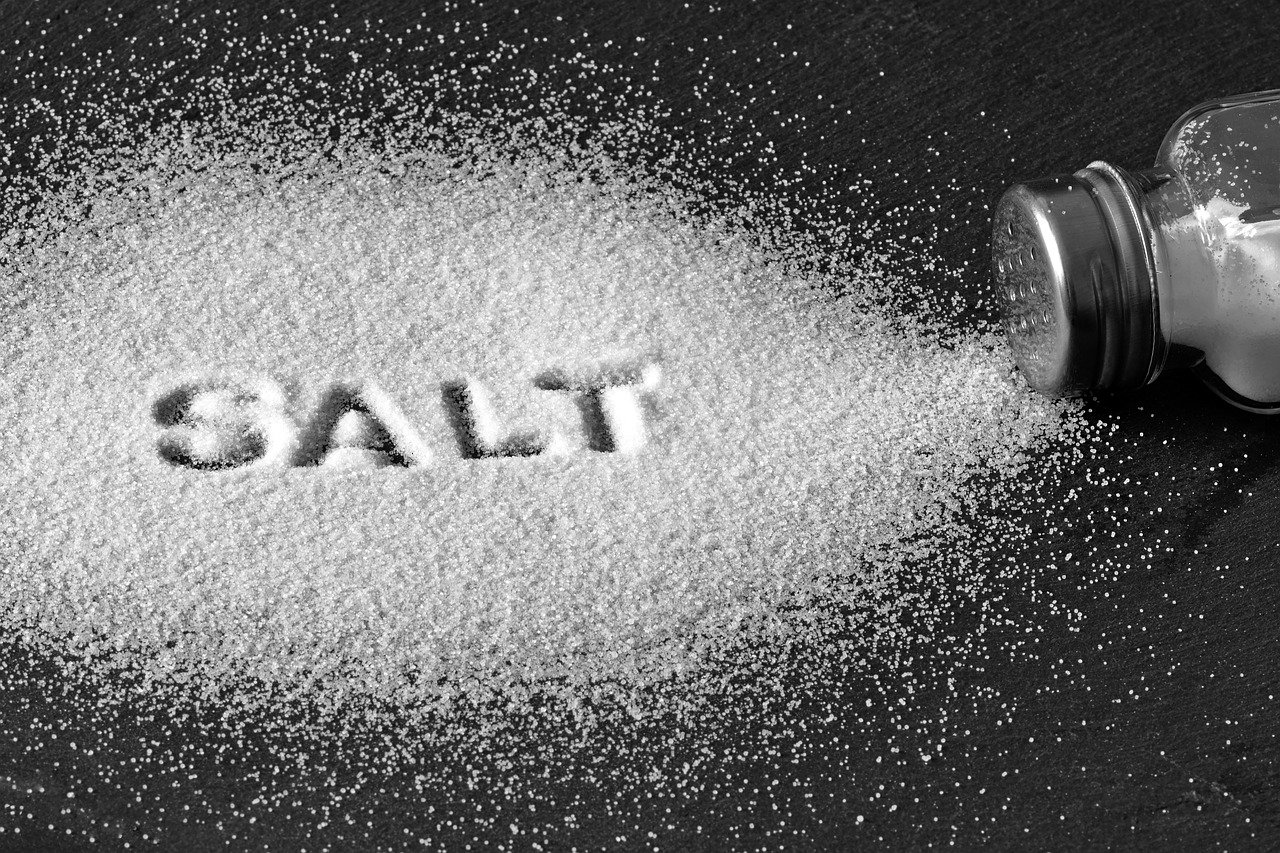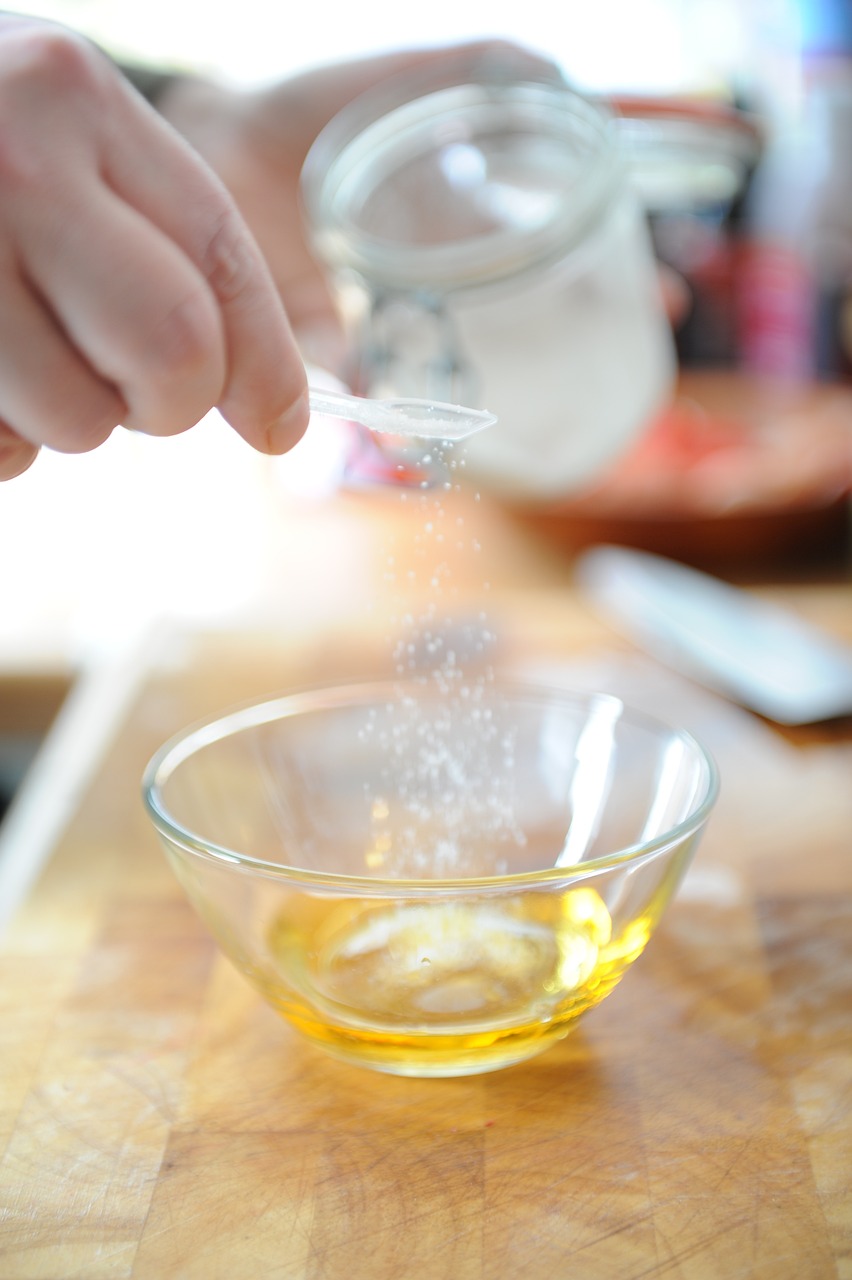
Salt is one of the oldest food additives used by the humans. Originally, it was used as a basic ingredient for preserving meat or fish. Today, it is considered to be an essential ingredient in cooking, to enhance the flavour of our food. Unfortunately, it is also found in large quantities in processed food products, which leads to a consumption of salt that is much higher than our needs.
Today, the average adult consumes between 9 and 12 g of salt per day, which is twice as much as the WHO’s recommendation of a maximum of 5 g per day.
Although salt is an essential element for the proper functioning of our body, too much salt can have harmful consequences on our health, and in particular lead to cardiovascular diseases.
In this article, you will find advice and tips on how to better manage your daily salt consumption.
The role of salt in our bodies
Salt is mainly composed of sodium chloride. Sodium plays a key role in maintaining the body’s water balance, i.e. the balance between salt and water. Together with potassium, it helps to maintain normal water levels between the inside and outside of the cells, so that they are properly hydrated.
This balance is essential for nerve transmissions and muscle contractions, but also for intestinal absorption of chlorine, amino acids, glucose and water, and in renal reabsorption.
The amount of sodium in the body also affects blood volume, i.e. the amount of fluid in the blood, and helps regulate blood pressure levels.
Sodium requirements are tricky to determine, but are estimated to be around 500mg to 1g per day for an adult, or about ¼ to 1/2 teaspoon of salt, to ensure proper body function.
Sodium deficiency could trigger the appearance of certain disorders such as muscle exhaustion, dehydration or loss of appetite, and in serious cases even the appearance of cerebral oedema, causing malaise, nausea, loss of consciousness and convulsions. However, the risk of deficiency remains very low nowadays because, as we will see below, salt is found in a wide variety of foods, and we usually consume it in excessive quantities.
The risks of excessive salt consumption
Excessive salt consumption is not without consequences for our health.
For some years now, the WHO has been warning that “sodium, an essential nutrient, increases the risk of heart disease, including stroke, and premature death when consumed in excess“.
Indeed, excessive salt consumption can put your body at risk of heart attack, but also of other health problems. According to the WHO, excess sodium in the body is the main risk factor for death related to diet and nutrition.
Too much salt in the body increases blood pressure at any age, which increases the risk of cardiovascular disease, stroke and heart attack. But other body disorders can also appear, or pathologies can be aggravated, such as
– water retention, causing swelling of parts of the body such as the face, hands and legs
– kidney fatigue, reducing the ability of the kidneys to filter toxic waste from the body and leading to the development of kidney stones
– osteoporosis, as salt causes an increasing elimination of calcium from the body through the urine, affecting bone density and promoting fractures
– imbalance of the intestinal microbiota, which can lead to obesity and the development of autoimmune diseases
– skin problems such as cellulite, acne, or premature skin ageing
Recommendations to reduce your daily salt consumption
1. Limit the amount of salt you add to your food
To reduce your salt consumption, do not add too much salt to your cooking water and only add salt sparingly to your dishes. Also avoid putting the salt shaker on the table and always taste your dish before adding salt.
Our taste buds are used to salt. By reducing the use of salt in your dishes, you will at first feel that the food has no taste. But your taste buds will gradually get used to it and you will soon notice that the absence of salt will allow you to enjoy the food more and you will find it more tasty.
For effective results, it is advisable to reduce the amount of salt consumed gradually. And to enhance the taste of your dishes, think of using garlic, shallots, spices, aromatic herbs, or citrus fruits such as oranges or lemons. They will give your dishes a kick and help you get used to the absence of salt more quickly.
2. Beware of hidden salts
The salt we add to our food when cooking or eating, called “visible salt”, represents only a minor part of the salt we consume (20% at most). Most of it, about 80%, comes from naturally salty foods (mineral waters, fish and shellfish, etc.), but above all from the processed products we eat. In fact, foodstuffs manufactured by the food industry or prepared outside (restaurants, canteens, etc.) very often contain salt added in far too large quantities. This is known as ‘hidden salt’.

It is mainly found in cold meats, cheese, crackers, crisps and other snack foods, but also in ready meals, pizzas, bread, pastries, soups and certain condiments such as ketchup, mustard and soy sauce.
Limiting the consumption of these foods is therefore essential to control your salt intake. To do this, prefer home cooking based on fresh, unprocessed products, and limit your meals outside (restaurants, snack bars, canteens, etc.) as much as possible.
3. Read and compare labels on packages
The foods with the most salt are not always the saltiest in terms of taste. Other ingredients, such as sugars, mask the taste of salt. It is therefore important to read the labels on the packaging to find out the salt content.
On the packaging, salt can be called “salt”, “sodium” or “sodium chloride”. To help you understand, 1 gram of salt is equivalent to about 400 milligrams of sodium. When checking labels, note that products containing more than 1.5 grams of salt per 100 grams of food are considered high in salt.
This makes it easier to compare products and choose those with the lowest salt content.
4. Get your children used to low-salt foods
Because good eating habits are learned at an early age, get your children used to eat low-salt foods. This will introduce them to the different tastes in food and teach them to appreciate the variety of flavours.
Also advise them to always taste before adding salt, to avoid eating too much salt. This simple gesture will become a reflex later on!



